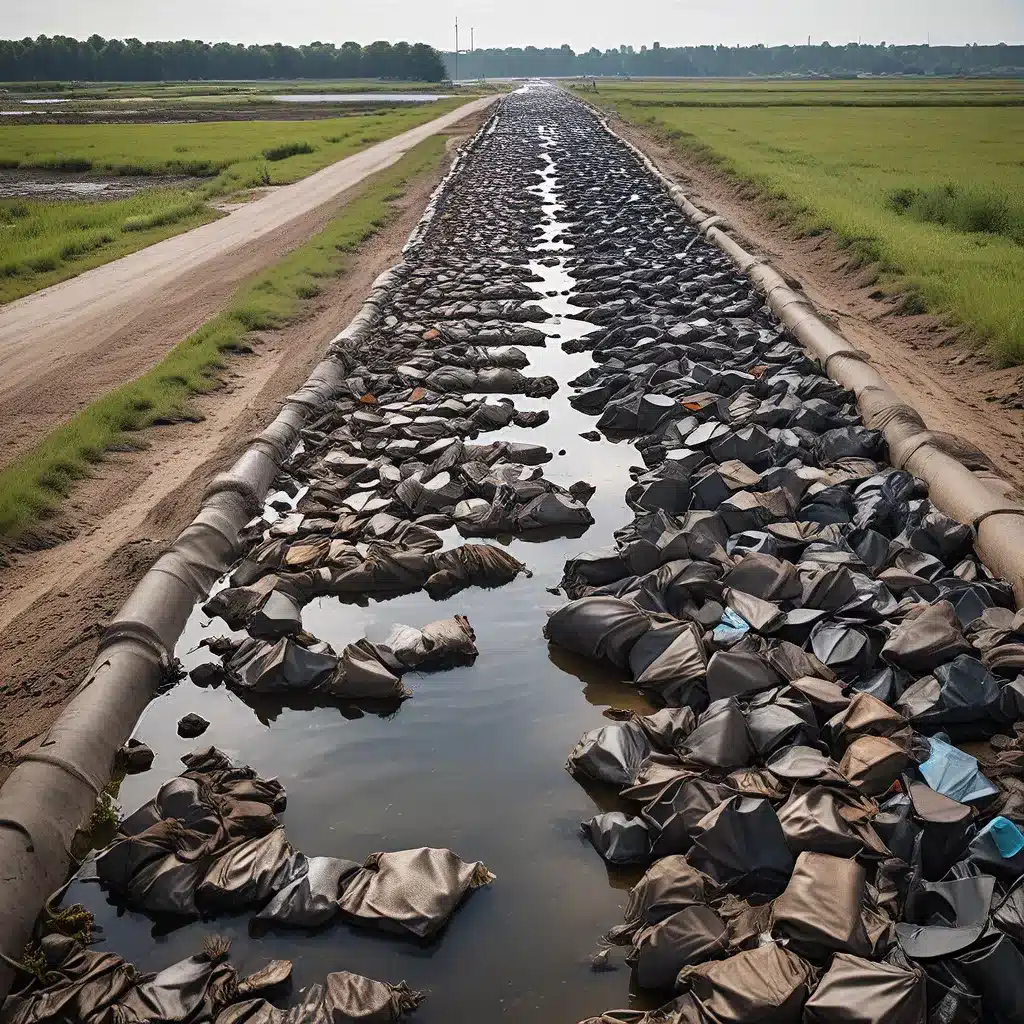
You know, when I was a kid, I never really gave much thought to where all that water goes after I flush the toilet or empty the sink. I just assumed it disappeared into some mysterious void, never to be seen again. Little did I know, that wastewater embarks on an incredible journey, transforming from something we’d rather not think about into a veritable treasure trove of valuable resources.
The Hidden Wonders of Wastewater
It all starts with those 13 billion gallons of wastewater that New York City’s 14 Wastewater Resource Recovery Facilities process every single day. That’s enough water to fill up over 19,000 Olympic-sized swimming pools! And the best part? This wastewater isn’t just whisked away, never to be seen again. Oh no, my friends. It’s transformed into a treasure trove of valuable resources.
Let’s dive a little deeper, shall we? After all, the more we understand about this incredible process, the more we can appreciate the true wonder of it all. Because when you really think about it, turning used water into renewable energy, nutrient-rich soil amendments, and even clean drinking water is nothing short of, well, magical.
The Wastewater Treatment Tango
It all starts with those 6,000 miles of sewer pipes, 135,000 sewer catch basins, and 95 wastewater pumping stations that make up New York City’s vast and intricate wastewater treatment system. Every time we flush, shower, or wash the dishes, that water makes its way through this elaborate network, eventually ending up at one of the city’s 14 Wastewater Resource Recovery Facilities.
Now, I know what you’re thinking – 14 facilities? That must be one heck of a logistical nightmare. But the folks at the Department of Environmental Protection have it all figured out. They use those 495 permitted outfalls for the discharge of Combined Sewer Overflows to ensure that even during heavy rainfalls, the system doesn’t get overwhelmed.
But the real magic happens inside those treatment plants. That’s where the water undergoes a true transformation, going from something we’d rather not think about to a veritable cornucopia of valuable resources. It’s like taking a lump of coal and turning it into a shimmering diamond – except, you know, without the need for intense heat and pressure.
Sludge to Shine: The Journey of Resource Recovery
Let’s talk about that solid byproduct of wastewater treatment, shall we? I’m talking about the sludge, of course. Now, I know what you’re thinking – sludge? Gross! But hold on to your hats, because this stuff is pure gold in disguise.
You see, New York City’s sludge is digested, which is a fancy way of saying that it undergoes a microbiological transformation. And the result? Biogas, a type of renewable energy that can be used to power the very facilities that produced it. Talk about a closed-loop system!
But the fun doesn’t stop there. After the sludge is dewatered – a process that separates the solid components from the liquid – the remaining solid product is known as biosolids. And guess what? These biosolids are chock-full of nutrients, making them the perfect soil amendment for gardening and landscaping.
In fact, New York City has set a goal of zero-landfilling of biosolids by 2030. That means they’re working on developing even more ways to reuse and recycle this valuable resource, rather than letting it go to waste. Now, that’s what I call turning trash into treasure!
The Resource Recovery Smorgasbord
But wait, there’s more! Clean Water Services in Oregon is taking resource recovery to a whole new level, with their water treatment facilities that produce clean renewable energy and even nearly drinking-water-quality effluent.
At the Rock Creek Water Resource Recovery Facility, they’re harnessing the power of wastewater and food grease to fuel their cogeneration system, which generates both electricity and heat. And at the Durham Water Resource Recovery Facility, they’re going above and beyond, treating the wastewater to such high standards that it’s practically drinkable.
It’s like a resource recovery smorgasbord, with something for everyone. Renewable energy, nutrient-rich soil amendments, and even clean water – who knew that the humble flush of a toilet could unleash such a cornucopia of wonders?
The Future of Wastewater: Endless Possibilities
As if all of this wasn’t enough, the future of wastewater treatment is looking brighter and more innovative than ever. Researchers are exploring new and exciting ways to extract even more value from our wastewater, from recovering rare earth elements to producing bioplastics and biofuels.
The possibilities seem endless, really. And as we continue to push the boundaries of what’s possible, I can’t help but wonder – what other hidden treasures might be lurking in those 13 billion gallons of wastewater? The mind boggles at the thought.
One thing’s for sure, though – the future of wastewater treatment is anything but dull. So the next time you flush, take a moment to appreciate the incredible journey that your wastewater is about to embark on. Who knows, it might just end up powering your home, nourishing your garden, or even quenching your thirst.
So, let’s raise a glass (of clean, recycled water, of course) to the unsung heroes of the wastewater treatment world. Because without them, we’d be, well, up a creek without a paddle. And that’s just not a future I’m willing to contemplate.


